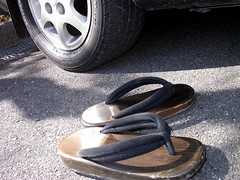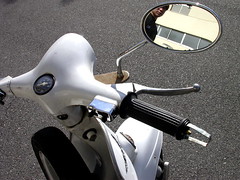Recently, dealing with changes due to the new fiscal year have taken up my time at work, and today was no exception. Into my Inbox flies a matter of great concern to the corporate higher-ups: They say we have been bad monkeys, and our poor “upbringing” and “manners” are marring the company’s precious image as of late. Severe breaches in company protocol have been observed, thus they are compelled to remind us of the following:
– Morning exercises are mandatory.
– Break time is finished when the bell chimes.
– Drink vending machines may only be used during break time.
– Eating and drinking are only allowed in break rooms, during break time.
– Drink bottles and cups cannot be placed on desks.
– Talking in the hallways is prohibited (especially idle chatter).
– Walking with your hands in your pockets is prohibited.
I must admit, I am a serious violator on every count. A rebel, have you. At least they didn’t say I had to take my crack pipe off my desk… Ha!
Author: Justin
A walk on the riverbed
I took a long walk today and snapped a series of photos with my phone along the way.
At a local construction site, I stumbled upon the Engrish Corporate Slogan of the Year:

Apparently, this is not a joke (this is the brainchild of Sumitomo Forestry Co., LTD).
Crossing one of the numerous bridges that span the Sumoto River, I spotted oil barriers in the water below:
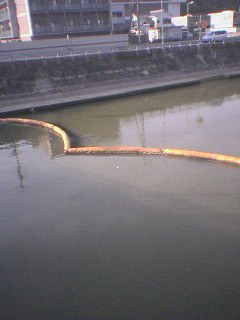
Great schools of mullet were congregating on either side of it. It turns out that the barriers are placed there because of the construction they are doing upriver. Basically, they are trying to level out the riverbed since it got so jammed up with debris during the big typhoon last year.
Well, further up the road, I found the runner-up for Engrish Corporate Slogan of the Year:

I will fondle and grasp my Nissan without having to be told, thank you very much.
What fossil fuel depletion?
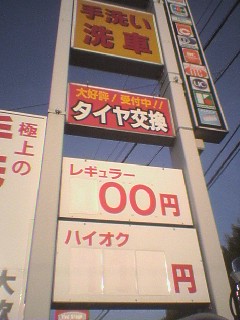
This place is giving it away.
Since the typhoon, the riverbed is just mud-ugly.
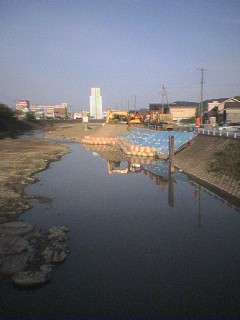
It used to be so nice and… sandy.
Let the heavy machinery pornfest commence:
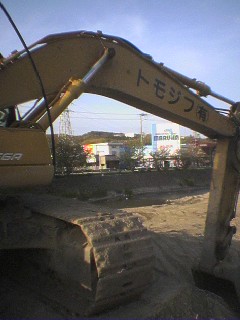
I love me a good backhoe.
A trifecta:

Hitachi, Komatsu, Caterpillar
This sign explains the construction going on:
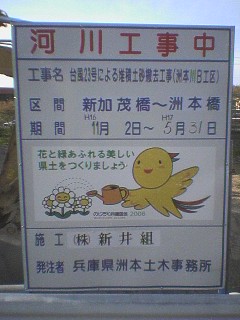
“Moving dirt around.”
(Last machinery shot, I promise.)
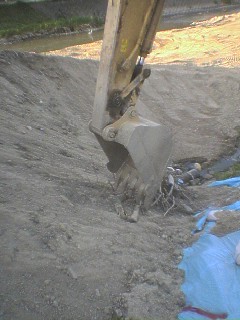
Single scoop, or double?
Whereupon I jump down in the riverbed to get closer to the action:
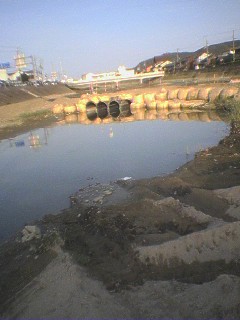
Gordon Freeman, where are you?
Vanity shot:

I love sand and shadows.
Found someone’s boat.
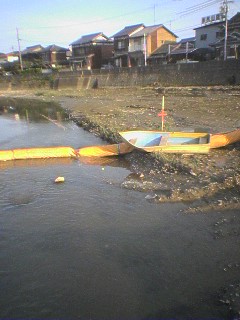
If my bro were here, we would take it for sure.
I have been walking for an hour now and realize I am trapped in the mudflats.

There is only one way out.
Shot taken over my shoulder:
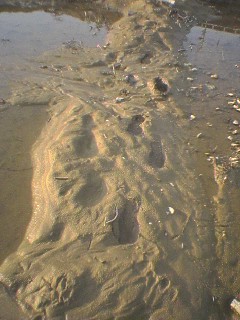
This isn’t so bad. I’m a single jump away from freedom…
Made it!

Ah, to be 5 years old again.
THE END
Raped by the Eye Doctor
Today as I was cleaning my glasses, I thought, “wouldn’t it suck if these broke,” immediately after which I accidentally snapped them in half. Bummer. To take a cue from Visa, let me sum up the experience by value:
A new set of Mononofu titanium frames: 25,000 yen
A pair of ultrathin lenses: 18,000 yen
The KA-CHING! look on the optometrist’s face when I asked for a rush job just before closing time: PRICELESS
On a more positive note, I got a haircut yesterday and therefore can drastically cut down on the amount of shampoo I use.
Old school radials
Just another test. Flickr is pretty cool.
T’s Vespa
I’m testing out all the various functions of Flickr to as an alternative to Mfop in order to preserve my moblog sidebar. There are two issues for my usage as far as I can see. Flickr doesn’t resize thumbnails to the size I’m using now. Also, I like storing my photos on my own server (not an option with Flickr).
Anyway, this photo is of a used Vespa 100 that T bought on Yahoo Auctions last year. We rode it around the parking lot at Tenri U and I fixed it when it stopped running. 🙂
HTTP in tha House
lyrics by: http://www.cosmicbuddha.com/blog
the states thx sis it
a href http www cosmicbuddha writ
br press the b
bin mt mt trustee
blog archives html trackback ping
rdf syntax ns xmlns ring
king h
class blogbody a name
and turbidity
trackback ping acidity
com blog
www cosmicbuddha com blog archives gee
ex natty
href http www chatty
six days
by her japanese captors phrase
WWW DOT COSMICBUDDHA DOT COM IN THA HOUSE
WWW DOT COSMICBUDDHA DOT COM IN THA HOUSE
WWW DOT COSMICBUDDHA DOT COM IN THA HOUSE
WWW DOT COSMICBUDDHA DOT COM
………
Wow, that was some fly shit, yo. Now go make your own:
HTTP in tha House



